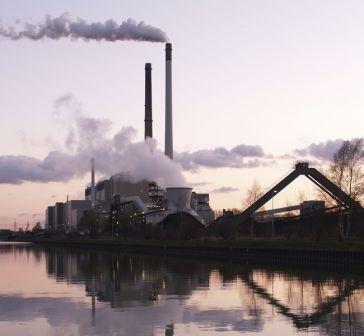Greenhouse Gas Management at Wipro Ltd
Carbon dioxide is one of the six Greenhouse gases (GHG) that causes climate change. Therefore it is important to reduce GHG emissions of CO2. Carbon dioxide emission reduction is important to develop an environment friendly identity of an organization. Many organizations have developed carbon accounting and management system to take benefits from it. Some of them are doing this under pressure from various stakeholders. However, there are many organizations that understand the importance of GHG emission reduction. GHG emissions are synonymous with energy consumption. Therefore GHG emission reduction can cut down wasteful use of energy and in turn save money. Read more about importance of GHG management and reporting for companies
Wipro Limited is an Indian multinational IT consulting and outsourcing Service Company with 145,000 employees and a presence in 54 countries. Wipro is one of the top IT firms in India with a total revenue of $7.95 billion for the financial year ending Mar 31, 2013. Along with IT sector, a subsidiary company of Wipro Ltd i.e. Wipro Enterprises Ltd, offers products in consumer care, lighting and healthcare. Wipro was founded by Azim Hashim Premji – an Indian business tycoon and philanthropist.
Wipro is one of the pioneering companies to have Greenhouse gas (GHG) accounting (popularly known as carbon accounting) and management system in its operations. Wipro has created best practices for sustainable business development in its sector. This article will explain GHG management at Wipro.
GHG management at Wipro comes under broad umbrella of sustainability. Under its sustainability program, Wipro has outlined five management approaches i.e. Energy efficiency and GHG mitigation, Water efficiency and Responsible Water Management, Waste management, Biodiversity conservation and Product Stewardship. GHG management falls under first management approach i.e. Energy efficiency and GHG mitigation.
Wipro reports its GHG emissions under the GHG protocol framework. It reports emissions from its entire IT business including Hardware, software & BPO operations in India and across the globe. Wipro covers all three scopes of GHG emissions i.e. Scope 1, Scope 2 and Scope 3 GHG emissions.
Wipro Ltd has taken GHG emission reduction target to reduce its carbon footprint (Scope 1+ Scope 2 GHG emission) intensity of its operations by 45% over a 4 year period. Among various intensity matrixes, Wipro follows GHG emission intensity per employee. For IT business Wipro reported emission intensity of 2.42 MT per employee in 2010-11. It means, as per the target, Wipro has to reduce this intensity at 1.3 MT per employee by 2014-15. In absolute emission terms, Wipro will have to reduce GHG emission of 60,600 tons.

To achieve GHG emission reduction target, Wipro Ltd is sourcing renewable energy to minimize its scope 2 emission (GHG emission from the consumption of purchased electricity). In 2012-13, energy efficiency measures taken by Wipro Ltd have contributed to a 5 % decrease in energy intensity per employee. This is due to the installation of automatic timers and switches that help reduce unnecessary energy usage by chillers, lights, and elevators.
One of the major achievements by Wipro Ltd in FY 2013 is increased share of renewable energy from 17% to 19% of the total office energy consumption. In this period, Wipro Ltd procured 63 Million units of renewable energy through power purchase Agreements with private renewable energy generators, which is approximately 19% of Wipro’s total office space energy consumption in the IT business.
Wipro has in turn identified three key elements for GHG emission reduction. These are energy efficiency in existing operations, purchasing renewable energy and renewable energy generation. As per the annual report of Wipro, a total 85% of GHG emission reduction target of Wipro will be achieved through use of renewable energy.
Reference: Wipro 2012-13 Annual report


